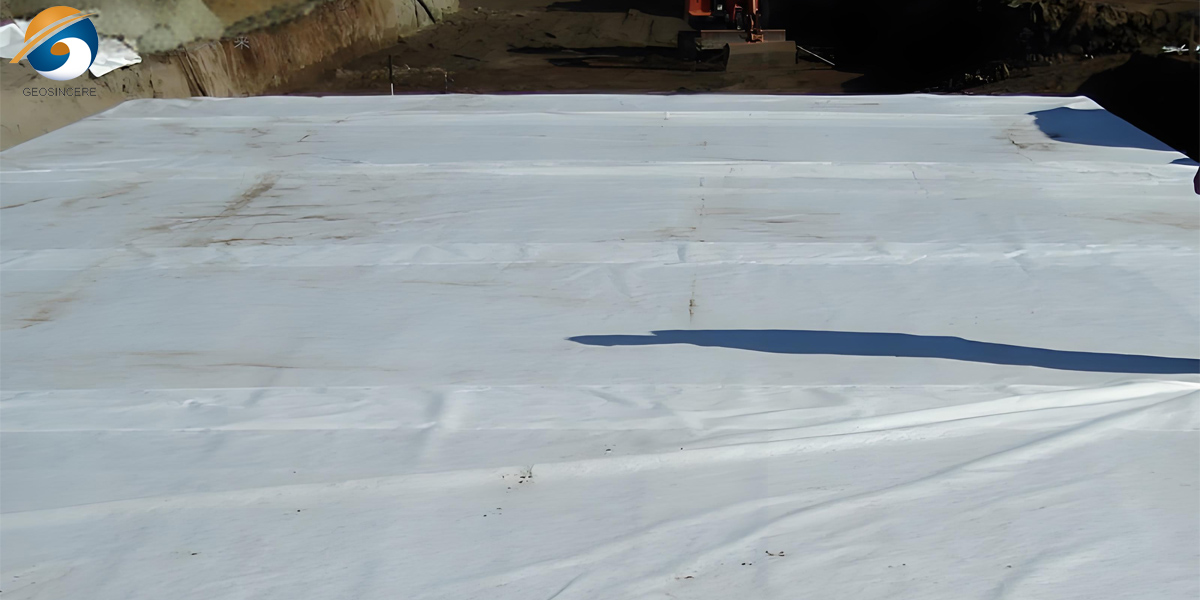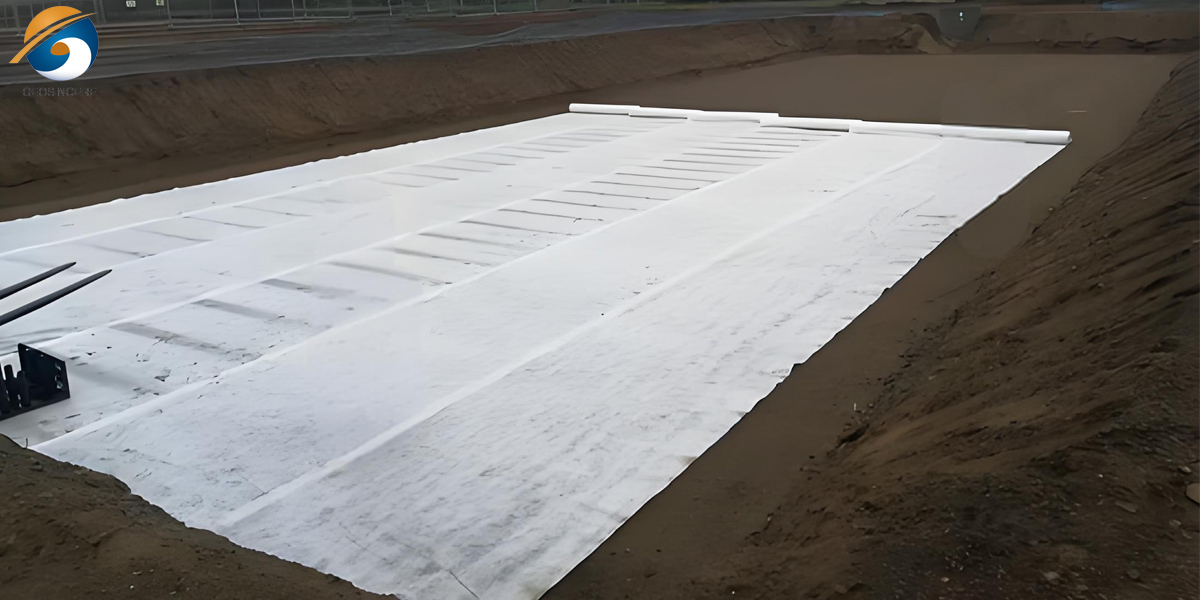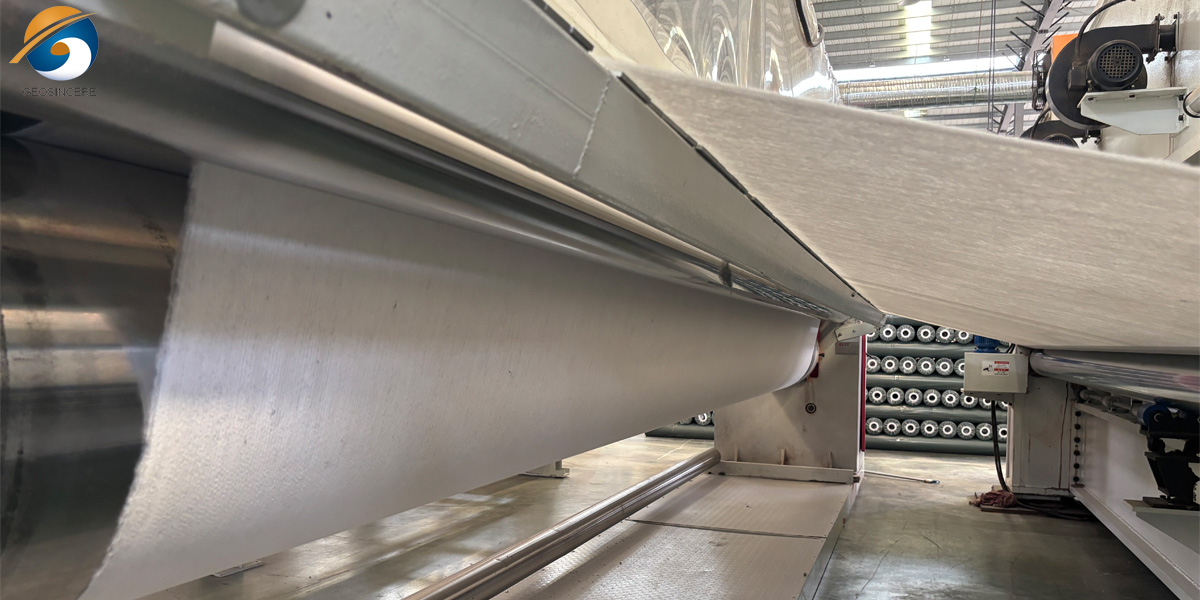Geotextiles for Roads: What Are They and How Do They Work?
Forget simply laying down asphalt or gravel. Modern road engineering relies heavily on a hidden hero beneath the surface: geotextiles.These synthetic fabrics are engineered workhorses, playing crucial, often invisible roles in creating longer-lasting, more stable, and cost-effective roads. But what exactly are they, and how do they function within the complex structure of a roadway?
1.What Are Geotextiles?
Geotextiles are permeable fabrics made from synthetic polymers like polypropylene or polyester. They are manufactured specifically for use in contact with soil, rock, earth, or other geotechnical materials in civil engineering applications. Think of them as high-tech, durable textiles designed to interact with the ground to solve engineering challenges. They come primarily in three forms:
1. Woven Geotextiles: Created by interlacing yarns (like traditional fabrics), offering high tensile strength and load distribution. Ideal for reinforcement and separation under heavy loads.
2. Non-Woven Geotextiles: Made by bonding fibers together mechanically (needle-punching), thermally, or chemically. They excel at filtration, separation, and drainage due to their felt-like structure and high permeability.
3. Knitted Geotextiles: Less common, formed by interlooping yarns, offering a combination of properties but used in more specialized applications.
2.How Do Geotextiles Work in Roads? The Core Functions
Geotextiles perform several critical functions within a road structure, often simultaneously. Understanding these mechanisms reveals their true value:
2.1 Separation: The Physical Barrier
The Problem:Weak subgrade soil (the natural ground beneath the road) can mix with the stronger aggregate base course (the crushed stone layer) placed on top. This contamination weakens the base, allows fines to migrate upwards, and leads to premature rutting, potholes, and structural failure.
The Geotextile Solution: Placed directly between the subgrade and the base course, the geotextile acts as a robust physical barrier. It prevents the intermixing of the two distinct layers while still allowing water to pass through.
Mechanism:The fabric's tensile strength resists puncture during aggregate placement and compaction. Its specific pore size prevents significant soil particles from passing upwards while permitting water flow. This maintains the integrity and strength of the aggregate layer, distributing loads more effectively over the subgrade.
2.2 Filtration: The Intelligent Filter
The Problem:Water pressure differences within the road structure (e.g., from rainfall or rising groundwater) can force fine soil particles to migrate. This "piping" erodes the subgrade, creates voids, and destabilizes the road base.
The Geotextile Solution: Positioned strategically (often adjacent to drainage layers or between soil types), geotextiles act as filters. They allow water to flow freely while retaining soil particles on the "upstream" side.
Mechanism: The geotextile's carefully engineered pore size distribution is key. It must be small enough to retain the critical soil fraction but large enough to allow sufficient water flow without clogging excessively (retention vs. permeability balance). Non-wovens are often preferred for their excellent filtration characteristics.
2.3 Drainage: The Planar Conduit
The Problem:Trapped water within the road structure is a primary enemy. It saturates layers, drastically reducing soil strength (leading to soft spots and deformation under traffic loads) and contributing to freeze-thaw damage in cold climates.
The Geotextile Solution: Geotextiles, especially non-wovens, have the inherent ability to collect and transport water *within* their plane (in-plane flow). They can act as drainage layers themselves in specific situations or, more commonly, wrap around aggregate drainage pipes or layers to protect them and enhance their function.
Mechanism:The interconnected void spaces within the fabric's structure create pathways for water to flow laterally. When used as a drain, they collect water seeping through the soil above and channel it away. When wrapping a pipe or stone drain, they prevent surrounding soil from clogging the more permeable drain core while still letting water enter.
2.4.Reinforcement: The Tensile Element
The Problem: Weak subgrades (soft clays, loose sands, peat) lack the inherent strength to support road loads without excessive deformation or shear failure. Building thick aggregate sections over them is costly and inefficient.
The Geotextile Solution:High-strength geotextiles (often wovens or specialized composites) are placed directly on the subgrade before adding base material. They introduce tensile strength into a system (soil) that otherwise only has compressive or shear strength.
Mechanism:As load is applied, the geotextile stretches slightly, mobilizing its tensile strength. This creates a "membrane effect," distributing concentrated loads over a wider area of the weak subgrade. More critically, it interacts with the aggregate through friction and interlock, restraining lateral movement of the base material and confining the subgrade soil, thereby increasing the overall system's bearing capacity. This allows for thinner aggregate sections or construction over soils previously deemed unsuitable.
2.5. Protection: The Cushioning Shield
The Problem:Sharp aggregate particles or uneven subgrade surfaces can puncture or damage sensitive waterproofing liners (like geomembranes) used in road drainage ditches, embankments, or adjacent structures.
The Geotextile Solution:A layer of non-woven geotextile placed directly over the geomembrane acts as a protective cushion.
Mechanism:The thick, fibrous structure of non-wovens absorbs localized stresses and puncturing forces from rocks or irregularities in the overlying material (soil or aggregate), preventing damage to the critical waterproofing barrier beneath.
3. Putting it Together: Geotextiles in Road Construction
A typical application involves placing a geotextile directly on the prepared subgrade. Its selection (woven vs. non-woven, specific weight, strength, permeability) depends on the primary function needed:
·Over a very weak, wet subgrade? A robust non-woven might be chosen for separation, filtration, drainage, andsome reinforcement.
·Over a moderately stable but potentially muddy subgrade? A lighter non-woven excels at separation and filtration.
·Building an access road over very soft ground? A high-strength woven geotextile is key for significant reinforcement.
Aggregate is then carefully placed and compacted on top of the geotextile. Subsequent pavement layers follow.
4. The Undeniable Benefits of Geotextile
Increased Road Life:By preventing layer mixing, soil erosion, and maintaining structural Improved Performance:Better drainage prevents water damage; reinforcement allows stable construction on weak soils.
Reduced Construction Costs:Thinner aggregate sections needed, especially over poor subgrades. Faster construction in challenging conditions.
Lower Maintenance Costs:Fewer potholes, ruts, and soft spots translate to reduced long-term repairs.
Enhanced Sustainability:Optimizes material usage (less aggregate), reduces hauling, and enables construction on marginal sites.
5. Conclusion: More Than Just Fabric
Geotextiles are sophisticated geosynthetic engineering materials, not mere cloth. By harnessing the fundamental principles of separation, filtration, drainage, reinforcement, and protection, they fundamentally improve the way roads are built and perform. They are a vital, cost-effective technology working silently beneath the pavement, ensuring the durability, stability, and longevity of the roads we travel on every day. Their intelligent integration into road design is a hallmark of modern, efficient, and resilient infrastructure. Upgrade Your Road Projects with Geosino Geotextiles! Contact us NOW for custom solutions!









